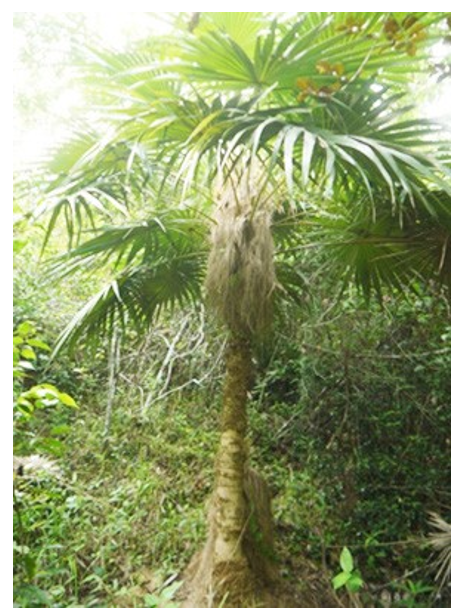Proyecto ambiental comunitario salvemos a la petate, las pozas, municipio Bahía Honda, Artemisa
Contenido principal del artículo
Resumen
El objetivo de este trabajo es presentar los resultados del proyecto ambiental comunitario Salvemos a la Petate, ejecutado entre los años 2005-2017 y desarrollado por educadores ambientales del Jardín Botánico Nacional de Cuba, en coordinación con la Estación de San Juan de Guacamaya, de la Empresa Flora y Fauna de la provincia de Artemisa. Se destacan los diferentes grupos meta, principales acciones educativas realizadas y los resultados obtenidos. Los métodos análisis-síntesis, lógico-deductivo y etnográfico, además del análisis documental, la observación directa y participante, la aplicación de entrevistas etnográficas semiestructuradas y el conocimiento de historias de vida, le sirvieron de basamento teórico-metodológico a la investigación realizada. Los principales actores del proyecto fueron artesanos, estudiantes de primaria y secundaria, hortelanos, médicos de la familia, personas de la tercera edad y religiosos. Entre las principales acciones ejecutadas se incluyen: el fomento del interés por la historia y valores naturales patrimoniales locales, la promoción de una adecuada educación ambiental conservacionista, el aumento de la cobertura arbórea comunitaria con el cultivo de endémicos y árboles nativos y la eliminación de plantas invasoras. El proyecto permitió extender el accionar educativo comunitario del Jardín Botánico Nacional, coadyuvó a mejorar los vínculos del jardín con la comunidad de Las Pozas, crear sentido de pertenencia ambiental en sus miembros, y potenció la acción popular en la solución e impulso de problemas ambientales locales.
Descargas
Detalles del artículo
Citas
Colectivo Científico (2006). Instructivo técnico para el manejo de la palma petate (Coccothrinax crinita ssp. crinita Becc.). Material de consulta, 2pp.
González Torres, L.R., Palmarola, A., González Oliva, L., Bécquer, E.R., Testé, E. y Barrios, D. (Eds.) (2016). Lista roja de la flora de Cuba. La Habana: Bissea No. 10, 1-352.
Hernández, N. (2016). El Jardín Botánico Nacional de Cuba en el pasado y el futuro. En S. Fuentes & K. Grotz (Eds.). Islas del Tesoro Verde. Descubrimientos botánicos en el Caribe. Botanisher Garten y Botanischer Museum Berlin.
Leiva, A.T. (2008). Conservación de la Palma Petate (Coccothrinax crinita spp. Crinita) como recurso tradicional exclusivo de la comunidad de Las Pozas, Bahía Honda, Pinar del Río, Cuba. Programa de Pequeñas Donaciones, Fondo para el Medio Ambiente Mundial y Programa de las Naciones Unidas para el Desarrollo. Material de consulta, 17pp.
Martínez, J.I. y J. Miranda (2009-2010). Etnobotánica y educación para la conservación de Coccothrinax crinita subsp. crinita, Palma Petate (Arecaceae). Revista del Jard. Bot. Nac. Univ. Habana, No. 30-31, 91-95.
Martínez, J.I. (2016). Conservación de la “palma petate” en el occidente de Cuba. Bissea, No.10 (1), 56.
Martínez, J.I. (2023). La educación ambiental desde los jardines botánicos: una necesidad social actual. Orbita Científica, No. 122, 29 enero-marzo. Recuperado de https://revistas.ucpejv.edu.cu/
Martínez, J.I. (2023a). Proyectos comunitarios del Jardín Botánico Nacional como contribución al desarrollo local. ECUCBA, No. 20 (10), 72-78. Recuperado de https://dot.org/10.32870/ecucba.vi20.298/308/
Pérez, N.D., Polanco, G., Figueredo, L.M. y Castillo, D. (2022). Propuesta de palmas endémicas, nativas y/o amenazadas para su introducción en la jardinería de la ciudad de Santiago de Cuba, Cuba. Foresta Veracruzana, No. 1 (24), 15-26. Recuperado de https://www.redalyc.org/journal/497/4977-4123003/html/
Pernús, M. y J.A. Sánchez. (2017). Germinación y dominancia de Coccothrinax crinita subsp. crinita (Arecaceae), palma endémica del Occidente de Cuba. Revista del Jard. Bot. Nac. Univ. Habana, No. 38, 49-56.
Pinares, A. (2004). Estudios para la conservación integrada de Coccothrinax crinita Becc. (Palma Petate). Tesis presentada en opción al grado científico de Máster en Biología Vegetal. Jardín Botánico Nacional, La Habana.


